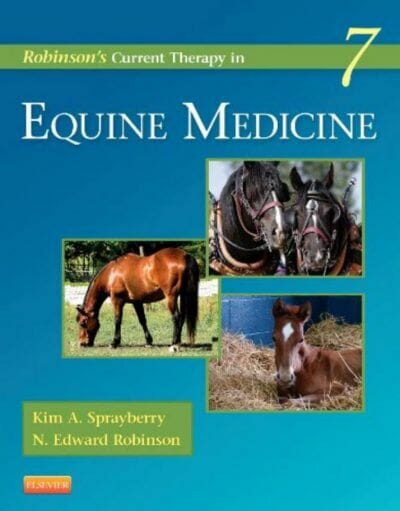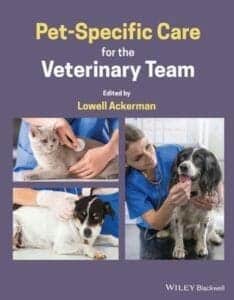Robinson’s Current Therapy in Equine Medicine 7th Edition

By Kim Sprayberry and N. Edward Robinson
With coverage of current issues and the latest therapeutic advances, Robinson’s Current Therapy in Equine Medicine Volume 7 PDF provides a concise, all-new reference for the management of equine disorders and conditions. Chapters emphasize the practical aspects of diagnosis and treatment and provide details for therapeutic regimens. This new volume brings you thorough coverage and authoritative advice on selected topics in areas that have seen significant advances in the last five years. Cutting-edge topics include emerging and exotic infectious diseases that may endanger horses in North America; biosecurity strategies; imaging updates; medical genetics; multimodal pain management; and regenerative, geriatric, and oncologic medicine. A logical body-system organization will save you time in finding the information you need. From well-known editors Kim Sprayberry and N. Edward Robinson, with chapters written by nearly 200 equine experts, this invaluable reference provides unparalleled guidance on the latest issues in equine medicine.
- Key topics include all-new coverage of the latest developments in imaging, biosecurity strategies for individual horse owners and owners of commercial farms and stables, diseases affecting horses at various ages, and a review of colic and other GI tract conditions.
- A recognized panel of nearly 200 expert contributors represents thriving private equine practices, referral hospitals, and academia, and provides insight on challenges, developments, and differing perspectives from around the world.
- A succinct approach is used to discuss pathophysiology and diagnosis, but therapeutics are covered in detail.
- The Current Therapy format focuses on emerging trends, treatment protocols, and diagnostic updates new to the field, providing timely information on the latest advances in equine medicine.
- A body systems organization makes it easy to find solutions for specific disorders.
- Suggested readings at the end of each chapter cite peer-reviewed articles and other sources for further research and study.
This Book is Available For Premium Members Only













![Ettinger’s Textbook of Veterinary Internal Medicine 9th Edition [PDF+Videos] Ettinger’s Textbook of Veterinary Internal Medicine 9th Edition [True PDF+Videos]](https://www.vet-ebooks.com/wp-content/uploads/2024/10/ettingers-textbook-of-veterinary-internal-medicine-9th-edition-100x70.jpg)

![Textbook of Veterinary Diagnostic Radiology 8th Edition [PDF+Videos+Quizzes] Thrall’s Textbook of Veterinary Diagnostic Radiology, 8th edition PDF](https://www.vet-ebooks.com/wp-content/uploads/2019/09/textbook-of-veterinary-diagnostic-radiology-8th-edition-100x70.jpg)






